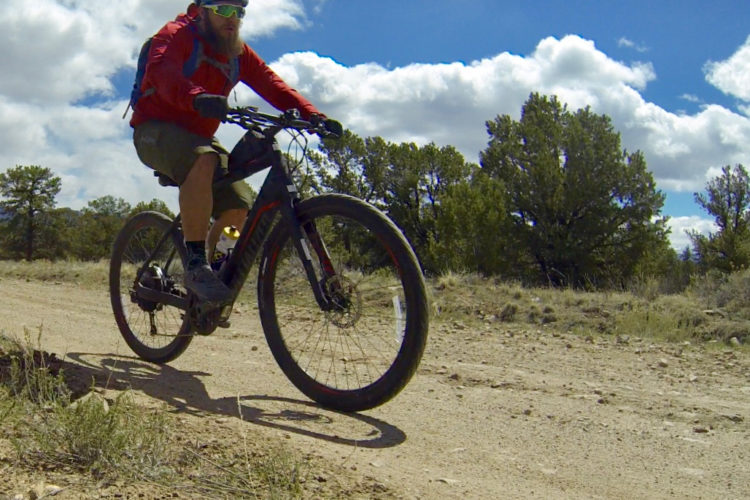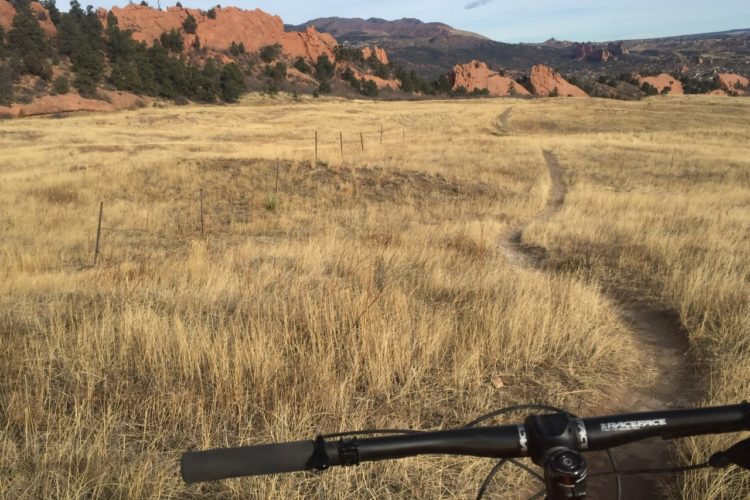With all the responsibilities we have, finding enough time to ride can be difficult. Commuting to work or school by bike can be a great way to spend more time in the saddle, especially considering that part of that time would be spent commuting anyway.
I started bike commuting several years ago after my first trip to Moab where it took me 5 1/2 hours to complete the Slickrock trail. I was seriously out of shape, and the only cure was to ride more. Combine that with $4 a gallon gas at the time and a paved bike path taking me to within several blocks of work, and bike commuting was a no-brainer.
Often the hardest part of bike commuting is getting started. But once you establish a good route and invest in a few items to make the ride go smoothly, you’ll forget about that old gas guzzler and will be amazed at your fitness after just a few short weeks. Here are a few tips to get your wheels rolling.
Route Finding
The way you bike to work may or may not follow the normal car route. Google Maps has a cool ‘bicycling directions’ feature that can give you an overview of your planned route, but dont trust it implicitly. Once you have a general route, do a weekend test ride. This will help you make any adjustments to your path plus it will give you an idea of how long the ride will take.
Clothing and Equipment
A few people ride in their work clothes but for myself and others, this isn’t the best idea due to sweat issues. I wear the same thing I would wear mountain biking and carry a change of clothes with me. I wear cleated bike shoes that look casual/outdoorsy but you could also leave a pair of street shoes at work. Some folks use a backpack to transport work stuff but depending on how much stuff you have, this can get heavy. If your bike has the tabs for it, consider getting a decent pannier rack or, if you don’t need to carry a laptop, a simple ‘trunk’ type bag should work. If you do carry a laptop, check out something like the Cannondale Cypod.
Safety
Keep your bike well maintained and adjusted and carry tools and spares for basic repairs. Most of us commute in areas with excellent cell coverage so remember to pack your phone in case your bike becomes disabled. As for vehicular traffic, ALWAYS assume that drivers dont see you and/or dont understand who has the right of way. Malicious drivers are pretty rare, but I see dumb things on my commute all the time.
Lights
Even if your schedule keeps you well within daylight hours, having lights is still a good idea so that motorists can see you. There are a number of inexpensive headlights and ‘blinky’ taillights on the market designed specifically for commuting. If you already have lights for night mountain biking, you could use those as well (though some may be heavy and/or bulky).
The Bike
At first I used my only bike, a hardtail mountain bike, for both mountain biking and commuting. While any bike will get you there and back, hardtails, ‘cross bikes, and road bikes are definitely better suited to the task. I have since upgraded to a full suspension ride, but I kept my old hardtail and turned it into a fully rigid, dedicated commuter.
Bike commuting isn’t nearly as much fun as hitting the dirt, but as a way to get in those extra miles it’s a great alternative to sitting in traffic. Just look at these two photos and decide for yourself.
photo right: by MSVG.























21 Comments
Feb 8, 2011
@seenvic, I'm not sure what you mean...
Feb 9, 2011
@joetutt, I almost bought a road bike for commuting, but I found the old hardtail to be well suited. It can haul a ton of crap, and I don't have to hop over every little crack in the pavement. Definitely get urban tires though. I have the now-discontinued Bontrager Comfort Hard Case.
@Goo, a 29er hardtail would be PERFECT.
Feb 8, 2011
Feb 8, 2011
Feb 10, 2011
Feb 9, 2011
BTW, how long is your commute?
Feb 11, 2011
The key is preparation and having the right clothing. You don't have to have the latest cycling garb, but ensure you have wicking under layers and a windproof/waterproof shell. I prefer bright clothes and you can't have too many lights. I usually have red lights on the bike, my helmet, camelback or daysack, ankle and use my MTB lights in strobe mode on the front unless i'm deep in trails. I've cycled in all temperature ranges and rain and only stop when it's too windy or snow makes the trails too difficult. Ultimately i find myself less stressed when i get home, get fitter enjoy my off road time more and feel better connected to the outside world.
I've now gone FS with my son hijacking my HT so i lock out the forks, pump up the rear can as if i was a clydesdale and leave it in propedal - where there is a will there is a way!!!!!!
Feb 9, 2011
I'm getting a 29er HT sometime this spring though... maybe that will make all the difference!
Mar 21, 2011
I like Nanook’s reply; ‘rode the bike to the DMV to renew his car registration‘. Every bicycle advocate in the world would smile over that one.
Feb 8, 2011
I commuted to work last year for 8 weeks up until my bike got stolen. It really helped my MTB game because the cardio I was getting from riding 18 miles round trip was increasing my lung capacity, strengthening my legs(as I rode uphill home), help build stamina and endurance which helped me ride harder and longer on the dirt. It help with climbing up on singletrack which I was extremely happy with cause I sucked at climbing(not that I like to climb but I am better at it..LOL). I wa commuting on a fully rigid old skool MTB with slicks on it but now I am (can't belive Im goona say this) actually looking to get me a road bike for commuting on...
Go way to be green as well and great saving on gas which can go into my Teocali... :)
Feb 8, 2011
Feb 8, 2011
And if that weren't good enough, I sold my car, put $6,000 in the bank, and bought a brand new road bike for commuting and longer road rides. I'm also saving about $200 each month in gas, insurance, maintenance, vehicle reg fees, etc. The longer I commute by bike, the more I wonder why it took me so long to do it!
Feb 9, 2011
Feb 8, 2011
It's black and red.
Feb 9, 2011
Feb 8, 2011
So I am looking at a pink and purple commuter bike and was thinking the color scheme must be the security system.
Feb 9, 2011
Feb 8, 2011
Feb 10, 2011
Feb 8, 2011
Feb 8, 2011